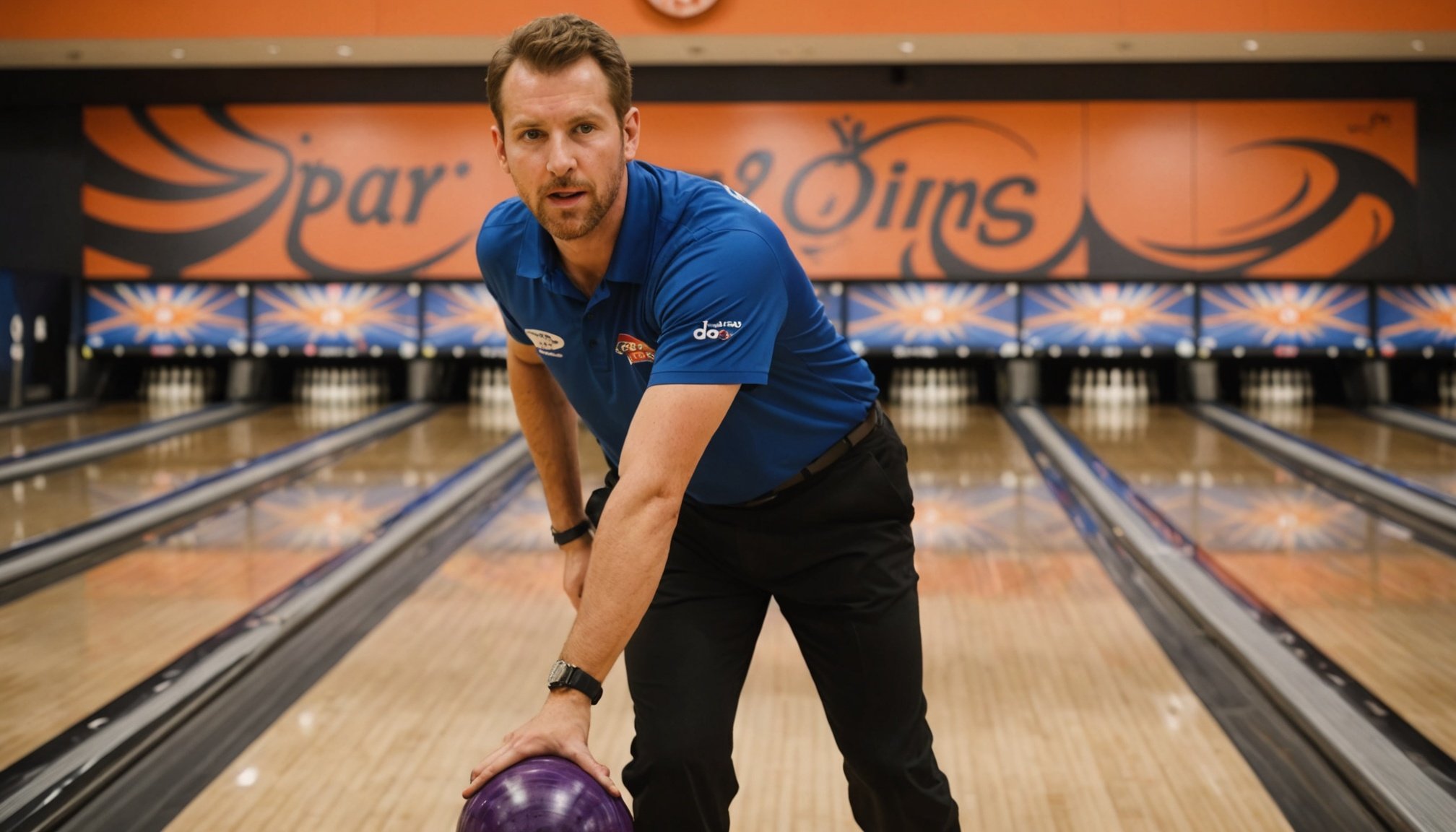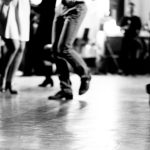Winning Strategies: Mastering Stress for Peak Performance in Competitive Bowling Tournaments
Understanding the Mental Game of Bowling
Bowling, often perceived as a leisurely activity, is in fact a highly competitive sport that demands a blend of physical skill, mental toughness, and strategic thinking. At the heart of competitive bowling lies the mental game, which can make or break a bowler’s performance. Here, we delve into the psychological aspects of bowling and explore how athletes can master stress to achieve peak performance.
The Role of Sport Psychology
Sport psychology plays a crucial role in helping bowlers manage stress and optimize their performance. As Alberto Cei, a renowned sports psychologist, notes, “Mental coaching is essential in sports like bowling, where movement control and handling nervousness are critical”[4].
Also read : Unlocking Pole Vault Success: The Critical Impact of Core Stability on Athlete Performance
In bowling, the mental game involves managing pressure, maintaining focus, and adapting to different game conditions. Junior bowler Hannah Windows from the Freeport bowling team highlights the stress involved: “It’s crazy, the stress that we can be put under sometimes, but just being able to still function as a team is just amazing”[1].
Building Self Confidence
Self-confidence is a cornerstone of peak performance in bowling. Bowlers who believe in their abilities are more likely to perform well under pressure.
In the same genre : Maximizing Equestrian Excellence: Cultivating a Profound Bond Between Riders and Their Horses
Developing a Positive Self Talk
Self-talk is a powerful tool in building and maintaining self-confidence. Positive affirmations can help bowlers stay focused and motivated. Here are some tips for effective self-talk:
- Focus on Strengths: Emphasize your strengths and past successes.
- Use Positive Language: Replace negative thoughts with positive, encouraging ones.
- Stay Present: Concentrate on the current game rather than worrying about the future or past.
- Visualize Success: Imagine yourself performing well and achieving your goals.
Coach Shawn Cummings of the Freeport bowling team praises his players for their positive attitude and leadership: “They’re both good kids, and they’re good students also. They’re both very good leaders for the other girls”[1].
Managing Stress and Anxiety
Stress and anxiety are inevitable in high-intensity competitions, but there are strategies to manage them effectively.
Techniques for Stress Management
Here are some techniques that bowlers can use to manage stress:
- Mindfulness and Meditation: Practice mindfulness to stay calm and focused.
- Deep Breathing: Use deep breathing exercises to reduce anxiety.
- Pre-Game Routines: Establish consistent pre-game routines to help manage nerves.
- Support System: Lean on teammates, coaches, and family for emotional support.
Hannah Windows emphasizes the importance of teamwork in managing stress: “They have such a nice dynamic. They always pull each other up. They’re always smiling. It’s amazing to see everybody getting along so well”[1].
The Importance of Mental Training
Mental training is as crucial as physical training in bowling. Here’s how athletes can incorporate mental training into their regimen.
Mental Training Exercises
- Visualization: Visualize different game scenarios and outcomes to prepare mentally.
- Positive Imagery: Imagine yourself performing well and overcoming challenges.
- Mental Rehearsal: Practice mental rehearsal of your shots to build confidence and muscle memory.
- Focus on Process: Concentrate on the process of bowling rather than the outcome.
Colin Cummings, a senior bowler at Freeport, highlights the importance of consistent practice: “He works his butt off. He deserves all of the accolades he gets. He’s a wonderful bowler. He practices almost every day out of every week”[1].
Overcoming the Yips
The yips, a sudden and unexplained loss of fine motor skills, can be a significant obstacle for bowlers. Here’s how to recognize and overcome this condition.
Understanding the Yips
The yips are characterized by a loss of muscle memory and decision-making abilities, often due to performance anxiety or neurological conditions. In bowling, this could manifest as inconsistent releases or poor accuracy[3].
Strategies to Overcome the Yips
- Clinical Sport Psychology Therapy: Seek professional help to address underlying psychological issues.
- Motor Imagery: Use visualization techniques to rebuild muscle memory.
- Pre-Performance Routines: Establish consistent routines to help manage nerves.
- Technique Adjustments: Make adjustments to your bowling technique to reduce pressure on specific muscles.
Equipment and Physical Preparation
While mental preparation is crucial, physical preparation and the right equipment are also essential for peak performance.
Choosing the Right Bowling Ball
The bowling ball is a critical piece of equipment. Here are some tips for choosing the right ball:
| Factor | Description |
|---|---|
| Weight | Choose a ball that feels comfortable but not too light. |
| Coverstock | Select a ball with a coverstock that matches the lane conditions. |
| Core | Consider the core type (symmetric or asymmetric) based on your bowling style. |
| Hook Potential | Choose a ball with the right hook potential for your skill level and lane conditions. |
The Importance of Bowling Shoes
Bowling shoes are designed to provide support and stability. Here’s why they are important:
- Consistent Foot Placement: Bowling shoes help maintain consistent foot placement, which is crucial for accuracy.
- Support and Stability: They provide the necessary support and stability for smooth, powerful shots.
- Custom Fit: Ensure your shoes fit well to avoid discomfort and distraction during the game.
Team Dynamics and Support
In team sports like bowling, the dynamics between teammates can significantly impact performance.
Building a Strong Team Culture
- Communication: Encourage open and positive communication among teammates.
- Supportive Environment: Foster a supportive environment where teammates can rely on each other.
- Shared Goals: Align team goals and work together towards common objectives.
Hannah Windows appreciates the team culture at Freeport: “We have students that are high honor roll. We have people that are in like, musicals and choir and band and all these other sports, and we all find a way to manage it. We’re all putting in so much effort, and I’m very, very proud of everybody on the team for doing that”[1].
Practical Advice for Peak Performance
Here are some practical tips to help bowlers achieve peak performance:
Pre-Game Preparation
- Warm-Up: Always warm up before the game to prevent injuries and get your muscles ready.
- Mental Warm-Up: Use visualization and positive self-talk to mentally prepare.
- Equipment Check: Ensure your equipment is in good condition and suitable for the game.
During the Game
- Stay Focused: Concentrate on the current frame and shot.
- Manage Nerves: Use deep breathing and positive self-talk to manage anxiety.
- Adapt to Conditions: Adjust your strategy based on the lane conditions and game progress.
Post-Game Reflection
- Analyze Performance: Reflect on your performance to identify areas for improvement.
- Celebrate Successes: Acknowledge and celebrate your achievements.
- Learn from Mistakes: Use mistakes as opportunities to learn and grow.
Achieving peak performance in competitive bowling tournaments requires a holistic approach that includes mental training, physical preparation, and the right equipment. By mastering stress management techniques, building self-confidence, and fostering a strong team culture, bowlers can optimize their performance and enjoy the game to its fullest.
As Coach Shawn Cummings notes, “We’ve had many kids over the years that don’t really know a whole lot about bowling, and by the time they finish as a senior, they have progressed so much. That’s the part that I like about it the most, just seeing them happy and getting better”[1].
By incorporating these strategies into their training regimen, bowlers can ensure they are always ready to perform at their best, both mentally and physically.











